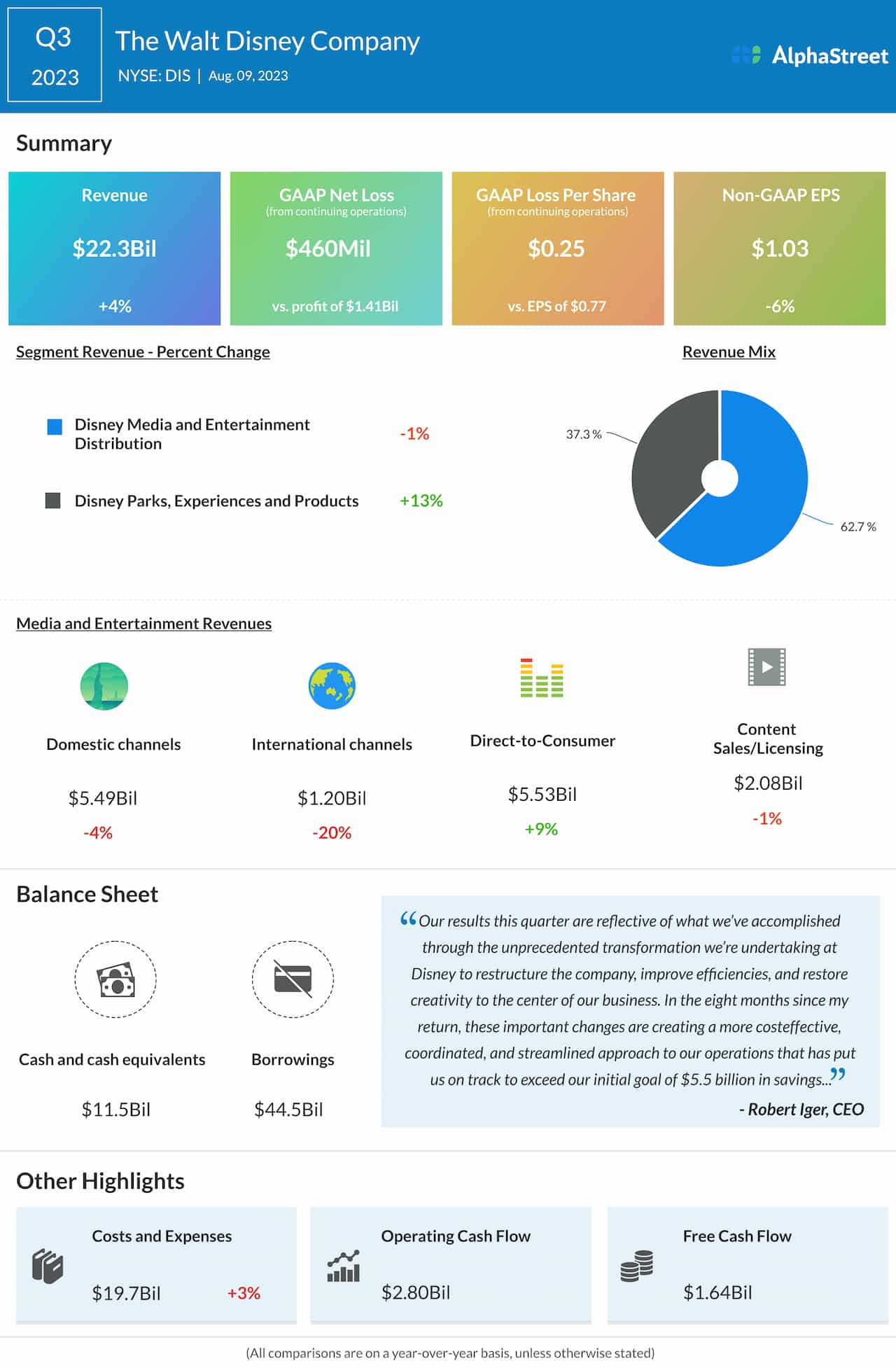Updated on December 27th, 2022, by Quinn Mohammed
The largest Canadian bank stocks have proven over the past decade that they not only endure times of economic duress, but that they can grow at high rates coming out of a recession as well.
Canadian bank stocks also pay higher dividends, making them attractive for income investors. Valuations have also remained quite low recently, boosting their respective total return profiles as a result.
In this article, we’ll take a look at four large Canadian banks – Canadian Imperial Bank of Commerce (CM), The Bank of Nova Scotia (BNS), Bank of Montreal (BMO) and Toronto-Dominion Bank (TD) – and rank them in order of highest expected returns.
Note: Canada imposes a 15% dividend withholding tax on U.S. investors. In many cases, investing in Canadian stocks through a U.S. retirement account waives the dividend withholding tax from Canada, but check with your tax preparer or accountant for more on this issue.
The top four big banks in Canada are very shareholder-friendly, with attractive cash returns. With this in mind, we created a full list of financial stocks.
You can download the entire list (along with important financial metrics like dividend yields and price-to-earnings ratios) by clicking the link below:
More information can be found in the Sure Analysis Research Database, which ranks stocks based upon their dividend yield, earnings-per-share growth potential and valuation to compute total returns.
The stocks are listed in order below, with #1 being the most attractive for investors today.
Read on to see which Canadian bank is ranked highest in our Sure Analysis Research Database.
Table Of Contents
You can use the following table of contents to instantly jump to a specific stock:
The top four Canadian bank stocks are ranked based on total expected returns over the next five years, from lowest to highest.
Canadian Bank Stock #4: Canadian Imperial Bank of Commerce (CM)
- 5-year expected returns: 13.9%
Canadian Imperial Bank of Commerce is a global financial institution that provides banking and other financial services to individuals, small businesses, corporations, and institutional clients. CIBC was founded in 1961 and is headquartered in Toronto, Canada.
On December 1st, 2022, CIBC reported its fiscal Q4 2022 earnings results. For the quarter, revenue increased 6% while adjusted EPS decreased 17% year-over-year. Q4 adjusted return on equity was 11.2% (down from 14.7% a year ago).
In addition to trading on the New York Stock Exchange, CM stock trades on the Toronto Stock Exchange, as do the other stocks in this article.
You can download a full list of all TSX 60 stocks below:
We expect 13.9% annual returns for CM stock, based on 4.0% expected EPS growth, the high dividend yield of 6.2%, and a roughly 5.1% annual boost from an expanding P/E multiple.
Click here to download our most recent Sure Analysis report on CM (preview of page 1 of 3 shown below):
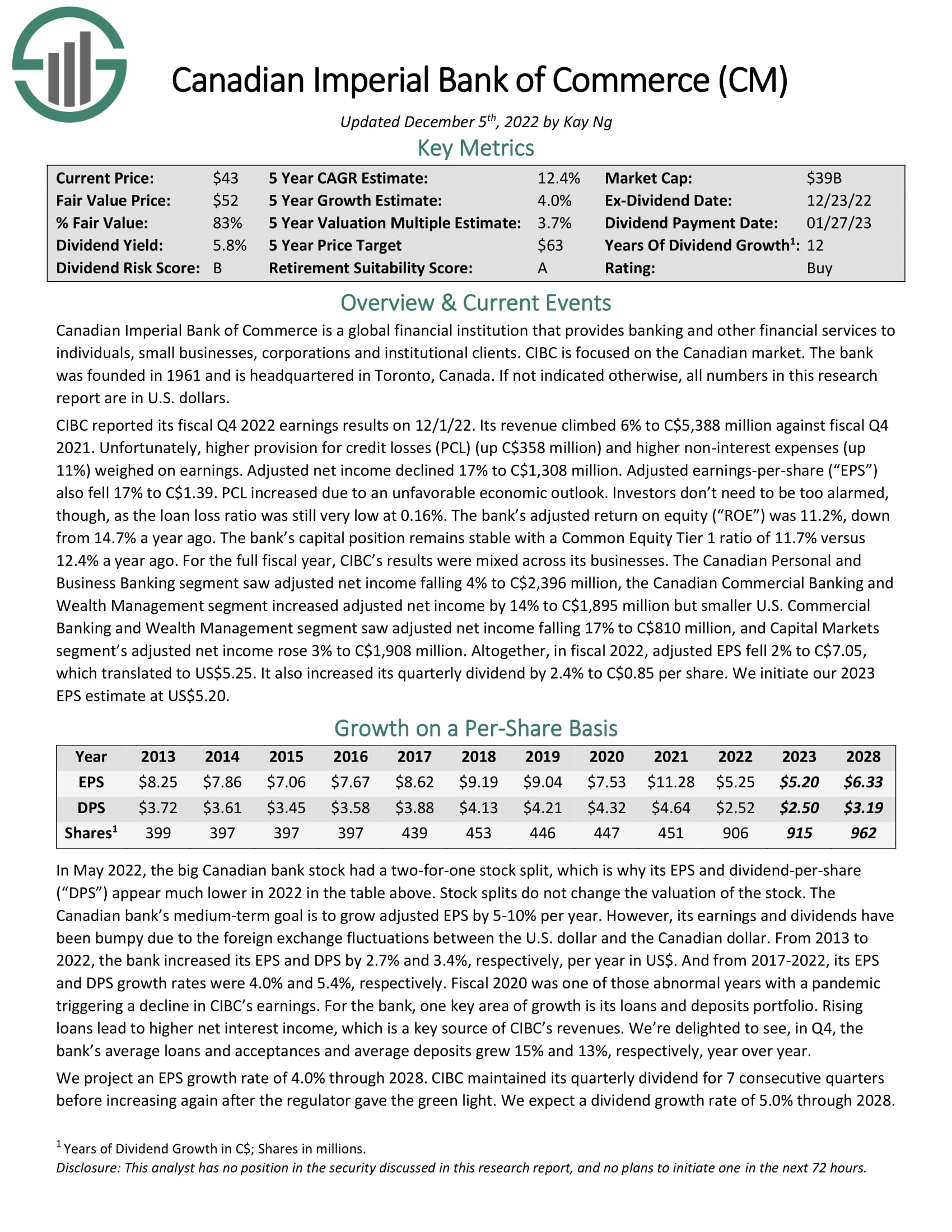
Canadian Bank Stock #3: Toronto-Dominion Bank (TD)
- 5-year expected annual returns: 14.0%
Toronto-Dominion Bank traces its lineage back to 1855 when the Bank of Toronto was founded. It is now a major bank with C$1.8 trillion in assets. The bank produces about C$14 billion in annual net income each year.
TD reported fiscal Q4 and 2022 earnings results on December 1st, 2022. Against fiscal Q4 2021, revenue increased by 16% to C$15.6 billion, while adjusted net income climbed 5.1% to C$4,065 million. Adjusted earnings-per-share rose 4.3% to C$2.18.
We expect total returns of 14.0% per year for TD over the next five years, comprised of 6.0% annual EPS growth, the 4.4% dividend yield, and a bump from an expanding P/E multiple.
Click here to download our most recent Sure Analysis report on TD (preview of page 1 of 3 shown below):
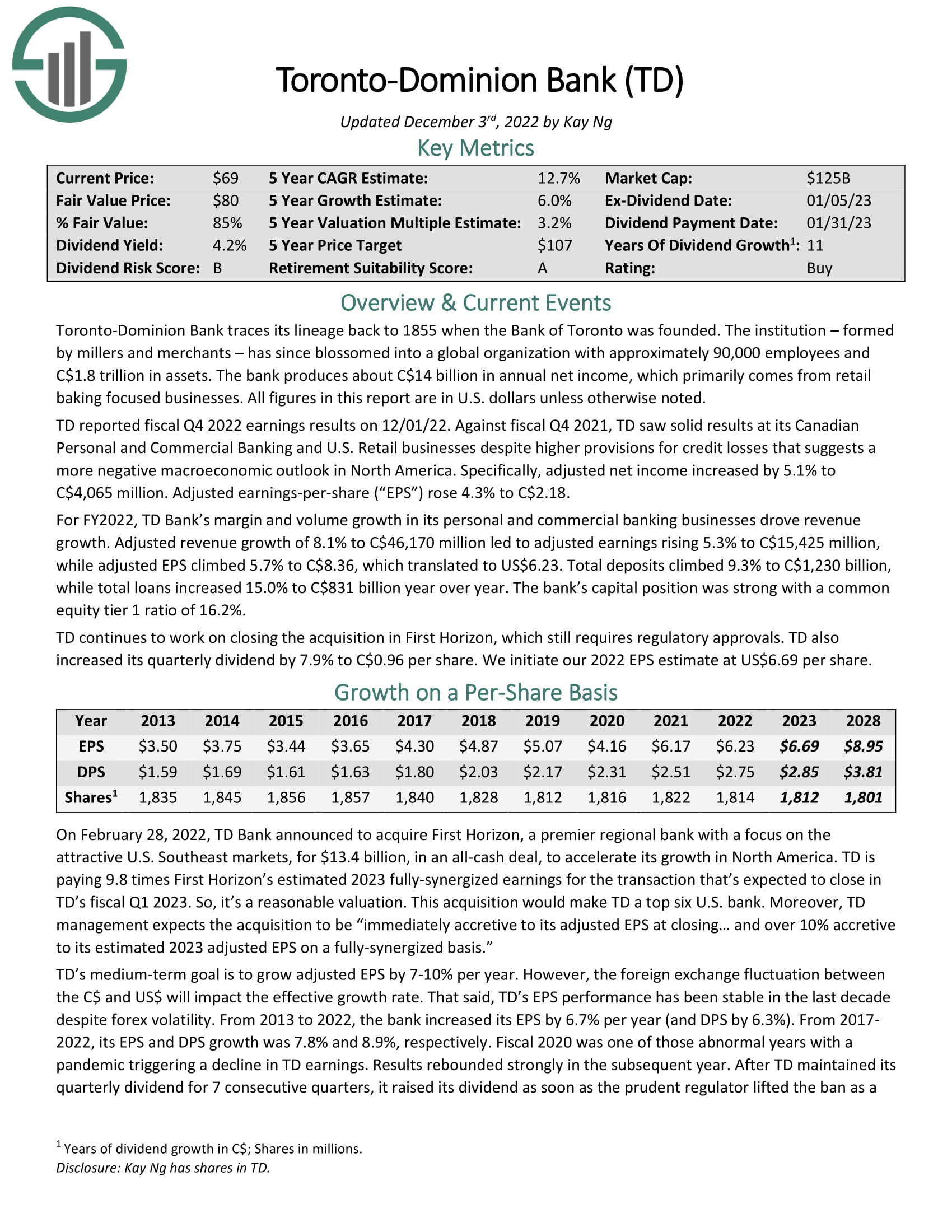
Canadian Bank Stock #2: Bank of Montreal (BMO)
- 5-year expected annual returns: 14.5%
Bank of Montreal was formed in 1817, becoming Canada’s first bank. The past two centuries have seen Bank of Montreal grow into a global powerhouse of financial services and today, it has about 1,400 branches in North America.
Bank of Montreal generates about 64% of its adjusted revenue from Canada and about 36% from the U.S.
Bank of Montreal posted its fiscal Q4 and 2022 financial results on December 1st, 2022. For the quarter, net revenue climbed 6.7%, however adjusted earnings-per-share decreased 8.7% year over year.
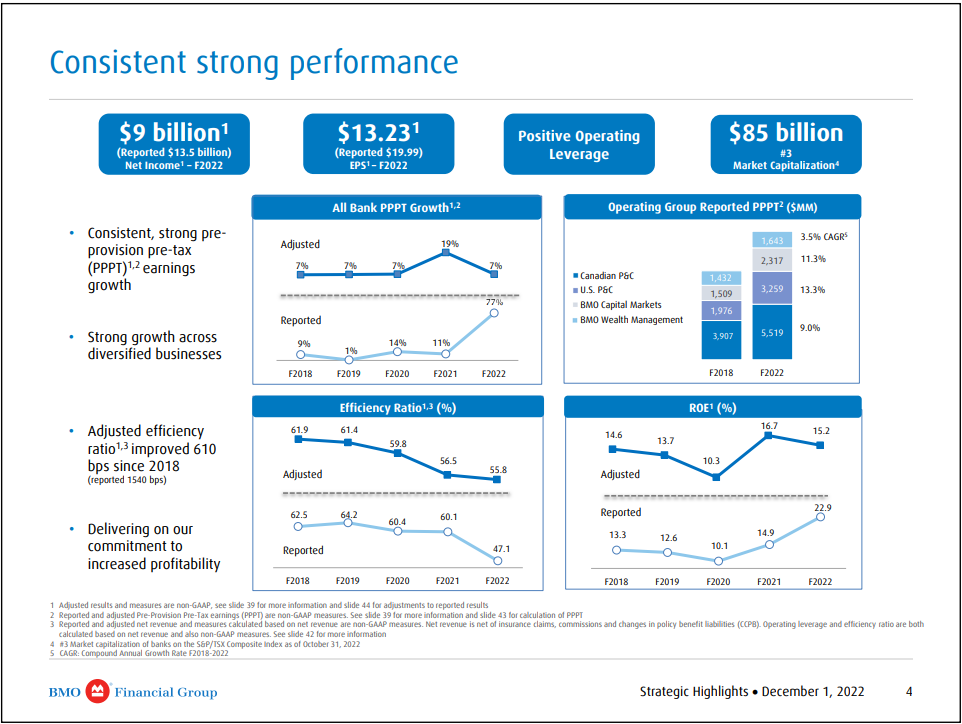
Source: Investor Presentation
We expect annual returns above 14% per year, driven by 5.5% expected EPS growth, the 4.7% dividend yield, and a 5.1% annual boost from an expanding P/E multiple.
Click here to download our most recent Sure Analysis report on BMO (preview of page 1 of 3 shown below):
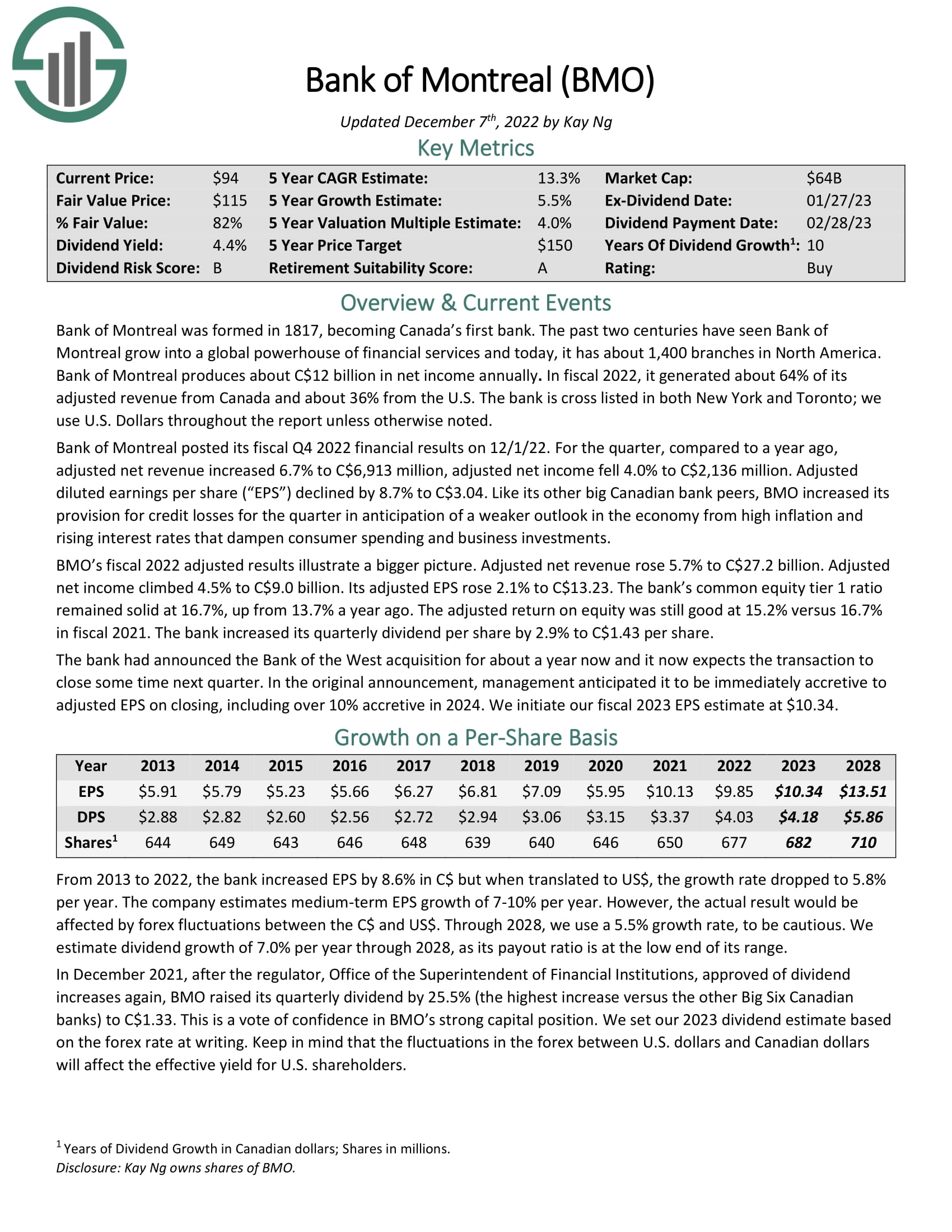
Canadian Bank Stock #1: Bank of Nova Scotia (BNS)
- 5-year expected annual returns: 16.7%
Bank of Nova Scotia (often called Scotiabank) is the fourth-largest financial institution in Canada behind the Royal Bank of Canada, the Toronto-Dominion Bank and Bank of Montreal. Scotiabank reports in four core business segments – Canadian Banking, International Banking, Global Wealth Management, and Global Banking & Markets.
Scotiabank reported fiscal Q4 2022 results on November 29th, 2022. For the quarter, adjusted net income decreased 4%, while adjusted EPS decreased 2% year over year. The adjusted return on equity (ROE) was 15.0%, down from 15.6% a year ago.
We expect annual returns of 16.7% for BNS stock, making it No. 1 among Canadian bank stocks right now.
Click here to download our most recent Sure Analysis report on BNS (preview of page 1 of 3 shown below):

Final Thoughts
Canadian bank stocks do not get nearly as much coverage as the major U.S. banks. However, income and value investors should pay attention to Canadian bank stocks. Many have higher dividend yields and significantly lower valuations than their U.S. counterparts.
TD Bank, Bank of Nova Scotia, Bank of Montreal, and Canadian Imperial Bank of Commerce are all highly profitable banks. And, all four have reasonable valuations with attractive dividend yields that are well above the U.S. bank stocks.
The following articles contain stocks with very long dividend or corporate histories, ripe for selection for dividend growth investors:
Thanks for reading this article. Please send any feedback, corrections, or questions to [email protected].















